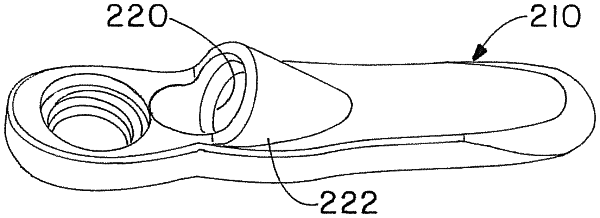| CPC A61B 17/8014 (2013.01) [A61B 17/1728 (2013.01); A61B 17/1775 (2016.11); A61B 17/1782 (2016.11); A61B 17/808 (2013.01); A61B 17/809 (2013.01); A61B 17/8052 (2013.01); A61B 17/8057 (2013.01); A61B 17/8605 (2013.01); A61B 17/92 (2013.01); A61B 17/8061 (2013.01)] | 18 Claims |

|
1. A plate for bone fixation comprising:
a first end;
a second end with a deep chamfer which tapers from a lateral edge of the plate;
a bottom surface configured for contact with a bone;
a top surface spaced-apart from the bottom surface, wherein an open-ended passageway communicates between the top surface and the bottom surface, the open-ended passageway being defined in offset relation to at least one of the top surface and the bottom surface, with a portion of the top surface circumferentially adjacent a top open-end of the passageway that is configured to receive a head of a screw within an angle of rotation of up to 20°; and
a shroud extending outward from the top surface at an oblique angle and covering at least a portion of the top open-end, the shroud adapted to be interposed between a tissue and the head of the screw so as to prevent tissue irritation and provide compression to the bone.
|